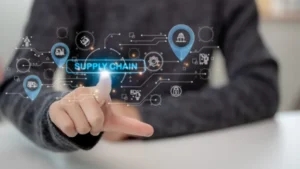Drone Design Technologies also known as unmanned aerial vehicles (UAVs), have rapidly evolved over the past decade. From recreational use to critical applications in industries like agriculture, construction, and emergency services, the technology behind drone design has become increasingly sophisticated. This article will explore the key design technologies used in drones, helping you understand their functionalities and applications.
What are Drone Design Technologies?
Drone Design Technologies encompasses the hardware and software components that allow drones to fly autonomously or semi-autonomously. These components work together to enable various functionalities, from basic flight to complex data collection and analysis.
Types of Drones
- Multirotor Drones: The most common type, featuring multiple rotors. They are easy to control and ideal for aerial photography.
- Fixed-Wing Drones: Resembling traditional airplanes, these drones are suited for long-distance flights and cover more ground efficiently.
- Hybrid Drones: Combining features of both multirotor and fixed-wing drones, they offer versatility in flight operations.
Key Design Technologies in Drones
1. Flight Control Systems

The flight control system is the brain of a drone. It includes sensors, processors, and software that control the drone’s movements. Key elements include:
- Inertial Measurement Units (IMUs): These sensors detect orientation, acceleration, and angular velocity, allowing the drone to maintain stable flight.
- GPS Modules: Essential for navigation, GPS modules enable drones to determine their exact location and follow predefined paths.
- Barometers: Used for altitude measurement, barometers help drones maintain a consistent flying height.
2. Propulsion Systems
The propulsion system consists of motors, propellers, and batteries. The choice of propulsion system greatly affects the drone’s performance and efficiency.
- Brushless Motors: These motors are more efficient and have a longer lifespan than traditional brushed motors, making them the standard in drone design.
- LiPo Batteries: Lithium polymer (LiPo) batteries are preferred for their lightweight and high energy density, allowing for longer flight times.
3. Materials and Structure
The materials used in drone construction impact weight, durability, and performance. Common materials include:
- Carbon Fiber: Lightweight yet strong, carbon fiber is popular in high-performance drones.
- Plastic Composites: Often used for lower-cost drones, these materials balance weight and cost-effectiveness.
- Metal Components: Metals like aluminum may be used for critical structural elements to enhance durability.
4. Communication Systems
Drones rely on robust communication systems to transmit data and receive commands. These systems include:
- Radio Frequency (RF) Communication: Used for remote control and telemetry, RF communication is essential for maintaining a connection with the drone.
- Wi-Fi and Cellular Networks: For data-heavy applications, such as video streaming, drones may use Wi-Fi or cellular networks for real-time data transmission.
5. Software and Autonomy
Software plays a crucial role in drone operation, from flight planning to data analysis. Key components include:
- Flight Control Software: This software processes data from the IMUs and GPS, allowing the drone to navigate autonomously.
- Mission Planning Tools: Users can set specific flight paths and tasks, optimizing efficiency for tasks like surveying or mapping.
- Data Analysis Software: After data collection, software tools help analyze the information gathered by the drone, providing insights for various industries.
Applications of Drone Technologies
1. Agriculture
Drones are revolutionizing farming by providing farmers with detailed aerial imagery and data analysis. Key applications include:
- Crop Monitoring: Drones can identify areas of crop stress, enabling targeted interventions.
- Precision Agriculture: By using drones for soil analysis and crop health monitoring, farmers can optimize their use of resources.
2. Construction and Infrastructure
In the construction industry, drones enhance efficiency and safety. Applications include:
- Site Surveys: Drones can quickly survey large areas, providing real-time data for project planning.
- Progress Monitoring: By capturing images and videos, drones help project managers track progress and identify issues.
3. Emergency Services
Drones are becoming essential tools for emergency response. Their applications include:
- Search and Rescue: Drones can cover large areas quickly, providing aerial views that help locate missing persons.
- Disaster Assessment: After natural disasters, drones can assess damage, helping agencies prioritize response efforts.
4. Environmental Monitoring
Drones are valuable for monitoring environmental changes. Key uses include:
- Wildlife Conservation: Drones can track wildlife populations and monitor their habitats without disturbing them.
- Pollution Monitoring: Drones equipped with sensors can detect air and water quality, providing crucial data for environmental protection.
Future Trends in Drone Design Technologies
As technology continues to advance, the future of drone design looks promising. Here are some emerging trends to watch:
1. Artificial Intelligence (AI) Integration
AI will play a significant role in enhancing drone autonomy. Drones equipped with AI can analyze data in real-time, making decisions without human intervention. This technology will be particularly beneficial in fields like agriculture and logistics.
2. Enhanced Battery Technologies
The development of new battery technologies, such as solid-state batteries, could significantly extend flight times and reduce charging times, making drones even more efficient.
3. Improved Safety Features
As drone use increases, so does the need for safety measures. Future drones may incorporate advanced collision avoidance systems and automatic return-to-home features, ensuring safer operation.
4. Regulatory Developments
As drone technology evolves, regulations will also change. Understanding and adapting to new laws and guidelines will be crucial for developers and users alike.
Conclusion
Drone design technologies are transforming various industries, offering innovative solutions that enhance efficiency, safety, and data collection. By understanding the core components and applications of drones, users can make informed decisions about their use and potential benefits.






Be First to Comment